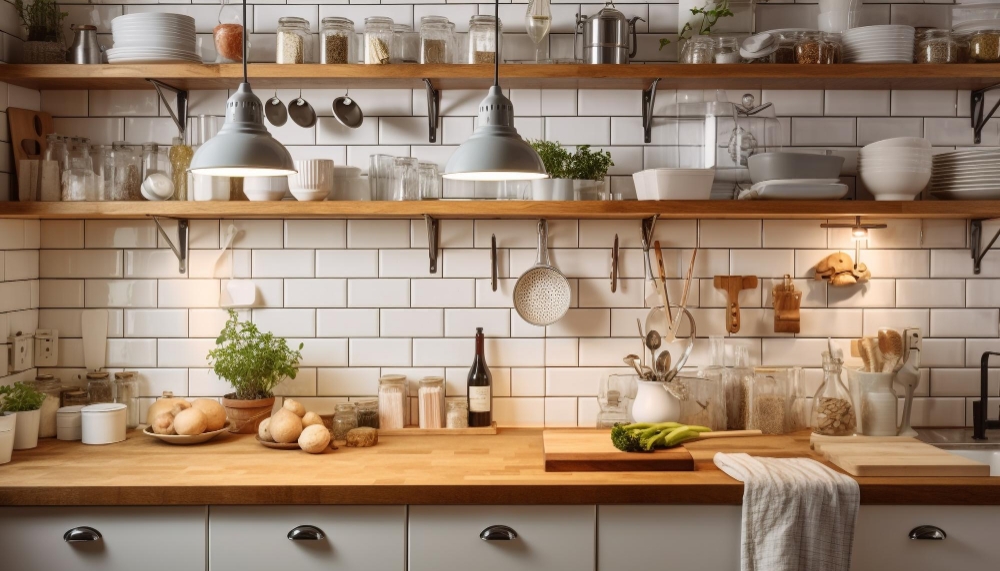Introduction
When it comes to kitchen design, the Spanish style offers a unique blend of rustic charm and timeless elegance. From warm color palettes to intricate details, a Spanish style kitchen can transform your cooking space into a welcoming haven that exudes character and sophistication. In this comprehensive guide, we’ll walk you through the key elements of creating your dream Spanish style kitchen, ensuring it’s not only aesthetically pleasing but also functional. Let’s dive in!
1. Color Palette and Materials
The foundation of a Spanish style kitchen lies in its warm and earthy color palette. Opt for shades like terracotta, warm yellows, deep reds, and rich browns. These colors emulate the Mediterranean landscape and evoke a sense of coziness. Complement the palette with natural materials such as clay tiles, stucco walls, and wrought iron accents. Incorporating these elements will immediately infuse your kitchen with rustic charm.
2. Tilework and Backsplash
Spanish tiles, often characterized by intricate patterns and vivid colors, play a pivotal role in creating an authentic Spanish kitchen. Consider installing hand-painted ceramic tiles with geometric or floral motifs as a backsplash. These tiles can be used behind the stove or as a border, adding a pop of visual interest. Moroccan-inspired tiles can also be used to create a stunning focal point, tying the design together.

3. Cabinetry and Furniture
When selecting cabinetry, opt for dark-stained wood with ornate detailing. Cabinet doors with arched panels or wrought iron grilles can add an air of elegance. Open shelving can also be used to display pottery and decorative pieces that capture the essence of Spanish design. For furniture, choose pieces with distressed finishes to enhance the rustic feel. A large wooden dining table with turned legs can serve as the heart of your Spanish kitchen.
4. Countertops and Surfaces
Natural stone countertops, such as granite or marble, work beautifully in a Spanish style kitchen. Their durability and rich textures complement the overall design. To maintain the warm and inviting atmosphere, consider adding a butcher block island, providing both functionality and a touch of rustic charm.
5. Lighting Fixtures
Lighting is crucial in setting the ambiance of your kitchen. Spanish style kitchens often feature wrought iron chandeliers or pendant lights with intricate designs. Look for fixtures that cast a warm, diffused glow to create an inviting atmosphere. Wall sconces can also be added for a touch of authenticity, illuminating corners and creating a cozy vibe.
6. Flooring Choices
For the flooring, terra cotta tiles are a classic choice that aligns perfectly with the Spanish aesthetic. Their reddish-brown hues and uneven edges add character, while also being easy to maintain. To enhance the visual appeal, incorporate decorative patterns using different tile sizes or shapes. Alternatively, hardwood flooring with a distressed finish can also be used for a warmer look.

7. Accents and Decor
To complete the Spanish style, pay attention to the finer details. Decorative elements like wrought iron pot racks, copper cookware, and colorful ceramics can be strategically placed to infuse the space with authenticity. Hang traditional Spanish artwork or pottery on the walls to showcase the cultural heritage. Adding potted plants, herbs, and colorful textiles will further enliven the atmosphere.
8. Creating an Open Layout
Spanish kitchens often embrace an open layout that encourages a sense of togetherness. Incorporate a large, central island with barstools for casual dining and gathering. This not only enhances the functionality of the kitchen but also provides a space for social interaction while cooking.
9. Maintaining Practicality
While the aesthetics are important, a kitchen’s functionality cannot be overlooked. Choose appliances that seamlessly blend with the design, such as vintage-style stoves or rustic refrigerators. Ensure there’s ample storage space to keep the kitchen clutter-free, and consider incorporating hidden storage solutions to maintain the elegant appearance.
Conclusion
Designing a Spanish style kitchen is about capturing the essence of Mediterranean charm and timeless elegance. By carefully selecting a warm color palette, incorporating traditional materials, and paying attention to intricate details, you can create a space that feels both welcoming and refined. Remember that balance is key – blending rustic elements with sophisticated touches will result in a kitchen that truly reflects the beauty of Spanish design. Embark on this creative journey, and soon you’ll find yourself in a kitchen that’s not only functional but also a true work of art.


